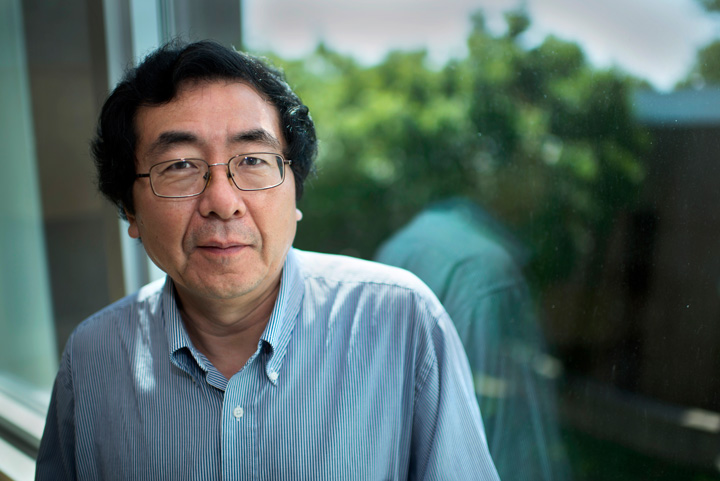Jingguang Chen is the Recipient of the 2017 Robert Burwell Lectureship in Catalysis
April 24, 2017
Jingguang Chen, recipient of the award described in this article from the North American Catalysis Society, holds a joint appointment in the Chemistry Department of Brookhaven National Laboratory. At Brookhaven, he studies catalysts to recycle carbon dioxide (CO2) into useful chemicals and fuels as a path to reduce the environmental impact of atmospheric CO2 emissions. He is also the lead investigator of the Synchrotron Catalysis Consortium (SCC)—along with co-PIs Anatoly Frenkel and Jose Rodriguez—working to expand the application of synchrotron-based methods in the field of catalysis.
Author Bruce Cook
I am pleased to announce that Professor Jingguang Chen of Columbia University is the recipient of the 2017 Robert Burwell Lectureship in Catalysis of the North American Catalysis Society, sponsored by Johnson Matthey and administered by The North American Catalysis Society. It is awarded biennially in odd-numbered years. The award consists of a plaque and an honorarium of $5,000. The plaque will be presented during the closing banquet ceremonies at the 2017 North American Meeting of the Catalysis Society. An additional $4,500 is available to cover travelling expenses in North America.
Professor Chen will present lectures at the local catalysis clubs and societies during the two-year period covered by this award.
The Robert Burwell Lectureship in Catalysis is given in recognition of substantial contributions to one or more areas in the field of catalysis with emphasis on discovery and understanding of catalytic phenomena, catalytic reaction mechanisms and identification and description of catalytic sites and species.
Professor Chen is being specifically recognized for his pioneering contributions to the mechanistic understanding and applications of carbide and bimetallic catalysts in heterogeneous catalysis and electrocatalysis. His research has utilized rigorous combination of surface science, theoretical modeling, reactor and electrochemical cell descriptions, and in-situ characterization to significantly advance the understanding of the active sites and reaction descriptors in transition metal carbides for a wide range of catalytic and electrocatalytic reactions. He has also pioneered studies for identifying the unique electronic and catalytic properties of monolayer bimetallic catalysts, combining surface science and in-situ investigations over single crystal surfaces, well-characterized polycrystalline thin films, and oxide-supported powder catalysts. His discovery of the dynamic behavior in the structural arrangement of bimetallic catalysts has provided guidance on the design of bimetallic structures, as well as the metal-oxide interfaces, that would remain catalytically active and stable under reaction conditions.
Bruce Cook
VP, North American Catalysis Society
Published on April 24, 2017.
2017-12206 | INT/EXT | Newsroom










